#brown skua
Text
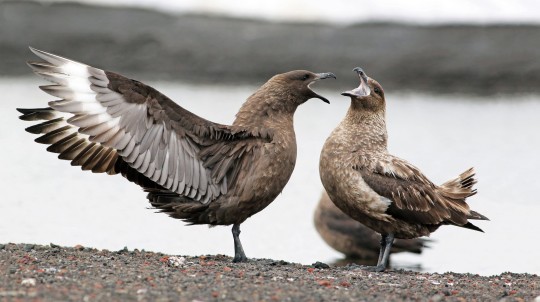
[1747/10977] Brown skua - Stercorarius antarcticus
Order: Charadriiformes
Suborder: Lari
Family: Stercorariidae (skuas)
Photo credit: Andrew Spencer via Macaulay Library
192 notes
·
View notes
Text

Brown skua
By: Unknown photographer
From: Wildlife Fact-File
1990s
117 notes
·
View notes
Text
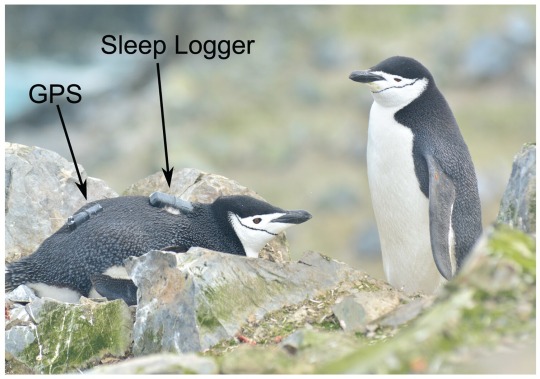
ANTARTIC PENGUINS CHAMPIONS OF POWER NAPS
Microsleep in humans are dangerous when driving, but just now, researchers found out penguins dominated microsleep, using these short sleep periods as strategy to balance sleep and vigilance requirements. An international team of researchers at the King George Island were looking at breeding chinstrap penguins (Pygoscelis antarcticus) using remote electroencephalogram monitoring, to they found out penguins nodded off more than 10,000 times a day, for only around 4 seconds at a time, but penguins still managed to accumulate close to 11 hours of sleep.
The brown skua (Stercorarius antarcticus), are very smart birds, and one of the main predators in nesting colonies. During incubation, skuas are known to prey on penguin eggs mainly on the border of the colony. As one penguin parent must therefore guard the eggs or small chicks continuously while its partner is away on foraging trips lasting several days, they face the challenge of needing to sleep while protecting their offspring In addition, they also have to effectively defend their nest site from intruding penguins, they need to stay alert.

-Recordings showing typical microsleep episodes in chinstrap penguins.
The investment in microsleeps by successfully breeding penguins suggests that the benefits of sleep can accrue incrementally.
Reference (Open Access): Libourel et al. 2023. Nesting chinstrap penguins accrue large quantities of sleep through seconds-long microsleeps. Science
#chinstrap penguin#Pygoscelis antarcticus#spheniscidae#science#biology#antarctica#marine science#ethology#bioblr#sciblr#Stercorarius antarcticus#skua#brown skua
129 notes
·
View notes
Text


Remember to read about the contestants before voting!
Brown Skua
Brown Skua prey upon penguin chicks, and live mostly in the Antarctic. They are pretty heavy birds, challenging some gulls as the heaviest shorebird. They are also known to identify individual humans, which means they’re actually quiet smart! They are also known to play with humans, and bond with ones that live in or around the Antarctic for a long period of time. Learn More!
European Dipper
The European dipper is Norway’s national bird. They are in fact not named for their diving, but are rather named for their habit of bobbing up and down as they stand in the middle of a stream. Their favorite food is aquatic invertebrate, but specifically they love aphipod shrimp. Learn More!
(Brown Skua photo by Michael Stubblefield)
(European Dipper photo by Marco Valentini)
55 notes
·
View notes
Text
love south polar skuas. specialist guys ever
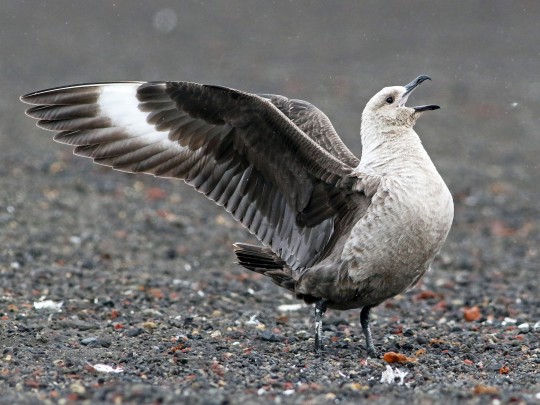
(photo from ebird)
#contact call#people who hate them have fallen for the penguin propaganda /j#listen i LOVE penguins they're very good. i just happen to love all their predators a bit more </3#anyways love these cuties. my dad got to see one and i'm supremely jealous >:((#they come in a few shades of brown too!#one of the reasons i love skuas is the colour variation in each species#arctic skuas take the cake for colour variation though. girl why do you have so many morphs!!!
0 notes
Text

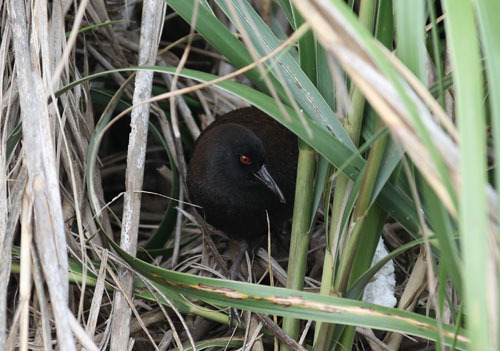

Access Denied: The Inaccessible Island Rail
The Inaccessible Island rail (Laterallus rogersi) is a rarely seen member of the rail family, Rallidae. Part of the reason for its obscurity is the place in which it resides: Inaccessible Island, part of the Tristan da Cunha archipelago in the southern Atlantic Ocean. These islands are extremely remote, and until 2019 it was unclear how L. rogersi even came to be there. We now know that the species colonized the island some 1.5 million years ago, originally coming in from South America and subsequently losing its ability to fly.
In addition to its unique evolutionary history, the Inaccessible Island rail's greatest claim is that it is the smallest flightless bird in the world. Individuals weigh between 35 to 49 g (1.2–1.7 oz) and can be 13 to 15.5 cm (5.1–6.1 in) long from beak to tail. Members of both sexes are dark brown with red eyes; some may have white striping along the underbelly or wings. Females tend to be slightly smaller and lighter in color than males.
The Inaccesible Island rail can be found on all habitats on the island in which it inhabits; these include low mountains and fern brush though the species is most abundant in the grasslands that grow close to the rocky shore. Within these habitats, L. rogersi is largely diurnal. They freely forage for invertebrates, including earthworms, beetles, and moths, as well as seeds and berries; as they have no natural predators they have few defenses against potential threats, although they can run extremely fast when alarmed.
Adults are highly territorial, and when two rivals of either sex encounter each other they will display by lowering their heads, circling each other, and calling loudly until one of them concedes. Males and females mate for life, and build nests in the tall grass. The breeding season is between October and January, in late summer, and females lay a clutch of 2 eggs. Both parents take turns incubating the eggs until they hatch. Chicks can be vulnerable to predation by the migratory brown skua, so parents guard the nest fiercely. The time it takes for chicks to fully mature is unknown, as is the average lifespan in the wild.
Conservation status: The Inaccessible Island rail is considered Vulnerable by the IUCN. The island's population is believed to stand at about 5,600 adult birds. While the island's ecology is currently stable, researchers believe the species would be seriously imperaled if invasive species such as house mice, feral cats and brown rats were introduced. Access to the island is currently restricted, and the island has been declared a nature reserve by the Tristan da Cunha Island Council.
If you like what I do, consider leaving a tip or buying me a kofi!
Photos
Peter G. Ryan
#inaccessible island rail#Gruiformes#Rallidae#rails#birds#islands#island birds#grasslands#grassland birds#Atlantic ocean#animal facts#biology#zoology
942 notes
·
View notes
Text
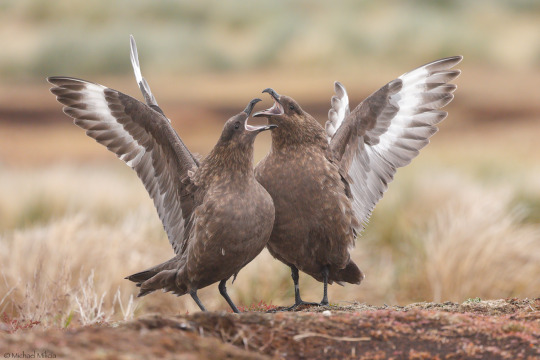
Antarctic Skua aka Brown Skua (Stercorarius antarcticus) raising a major ruckus, family Stercorariidae, order, Charadriiformes, Falkland Islands
photograph by Michael Milicia
#skua#seabird#stercorarius#stercorariidae#bird#ornithology#south america#falkland islands#animals#nature
473 notes
·
View notes
Text
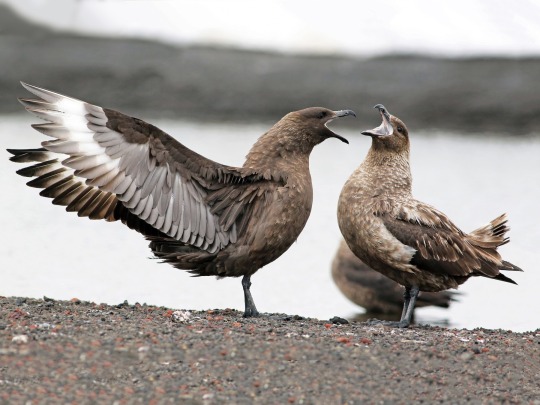
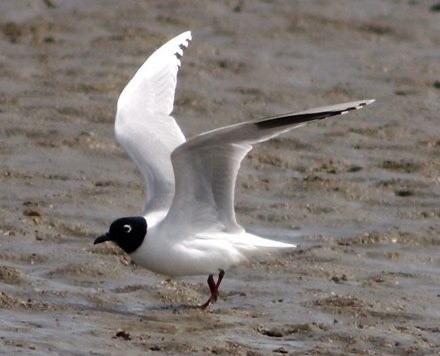
Harry and kim. To me
(Pictured: brown skua and saunders gull)
22 notes
·
View notes
Text





disco furlysium. sorry.
[id in alt text and under the cut--sketches also under the cut!]


[ID: A Disco Elysium fancomic featuring Kim Kitsuragi and Harry Du Bois portrayed as cartoony animal people. Kim is a black cat and Harry is a brown dog.
Panel One: Kim and Harry are standing next to one another. Harry is holding a flashlight.
Panel Two: Harry turns on the flashlight, and Kim leaps for the beam of light that results with a wide-eyed expression.
Panel Three: The flashlight has been turned off. Kim is on the floor with a defeated expression, and Harry looks at him with a neutral expression.
A Disco Elysium fancomic featuring Kim Kitsuragi and Harry Du Bois portrayed as cartoony animal people. Kim is a black cat and Harry is a brown dog.
Panel One: Kim, smiling, holds a hand up for an Ace's High.
Panel Two: Kim, still smiling, waits for Harry to reciprocate. Harry looks at Kim's hand with some confusion.
Panel Three: Accompanied alongside text that reads: "Thought Gained: Ace's High(?)", Harry leans his head over so he can be pet. He is smiling and his tail is wagging. Kim's expression has gone from smiling to confused.
A drawing of Andre (aka Pete Andre), Egg Head (aka Germaine van der Wijk), and Noid (aka Karl Holtzmann) as a wolf pack. Andre is smiling and waving, Noid has a thoughtful closed-eyes expression, and Egg Head is cheering in the back. Tiago, as a cat, is in the rafters. Soona Luukanen-Kilde, as a rabbit, is at her radiocomputer with an annoyed expression.
A drawing of Acele Berger as a (silver) bird with a neutral expression, Lawrence Garte as a bird (skua) with an annoyed expression, and Klaasje Amandou as a cat with a cigarette in her hand and a smile.
A drawing of Elizabeth Beaufort as a cat with a neutral expression, Ruby the Instigator as a (lone) wolf with a determined expression, and Titus Hardie as a (guard) dog with a smug expression. /end ID]
#contra art#comic#fanart#disco elysium#harry du bois#kim kitsuragi#disco elysium fanart#de fanart#harrier du bois#kimharry#harrykim#also featuring the speedfreaks and soona and tiago and garte and klaasje and elizabeth and ruby and titus. good lird
391 notes
·
View notes
Photo
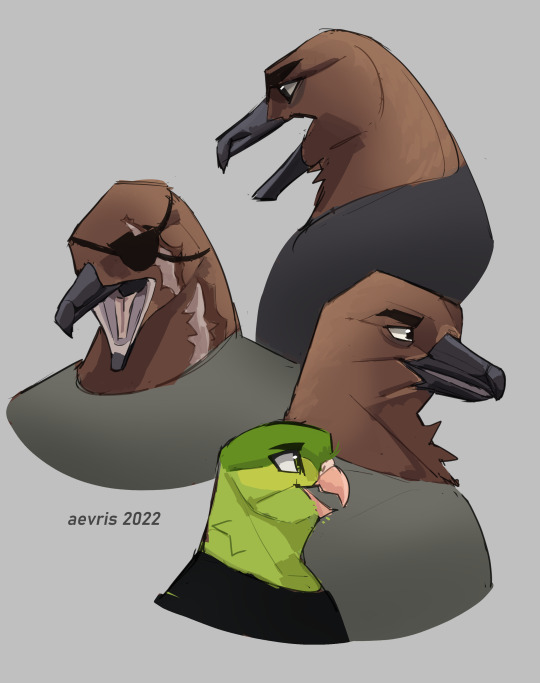
added a couple more of my OCs to the bird AU. brown skua and plain parakeet
193 notes
·
View notes
Text


Brown skua. OK I lied earlier, I am posting one picture for my life list even though they eat penguin eggs O:<
31 notes
·
View notes
Text
Moons 4-5
MURKCLAN - a group of mercats living within the shadowy tangles of a kelp forest. Known by the other clans for their dark pelts and secretive natures.

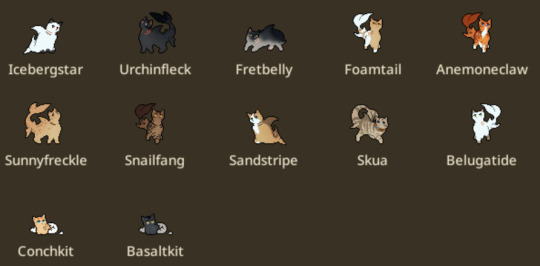
🌊 LEADER: Icebergstar - a large white tom with black paws and ears
🦑 DEPUTY: Urchinfleck - a dark grey she-cat with darker speckles and stripes; Apprentice: Belugapaw
🫧 MEDICINE CAT: Fretbelly - a blue tom who’s scales have darkened with age, he has a white underbelly
🌊 WARRIORS:
Foamtail - a dark yellow tom with large white stripes on his tail
Anemoneclaw - a spotted ginger she-cat with some white markings
Sunnyfreckle - a speckled yellow tom
Snailfang - a dark brown spotted she-cat
Sandstripe - a dark yellow tom with a brown dorsal stripe
Belugatide - a white tom with light brown paws and ears
🦑 APPRENTICES: [currently none]
🫧 QUEENS + KITS:
Skua - a light brown tabby she-cat with jagged stripes, formerly a loner
Conch - a pale ginger tabby tom-kit
Basalt - a dark grey she-kit with a dorsal stripe and golden eyes

THE UPWELLING - An oceanic season marked by brisk winds, cold water, and plenty of sunlight. This particular combination causes an explosion of life and activity in the sea, making for plentiful hunting.
MOON 4
🌊 Skua has fully healed from the strain of giving birth. Icebergstar and Urchinfleck sit down with her to discuss what training they’d like her to go through. The kits are being quite disruptive and naughty as their mother tries to have this important conversation. Urchinfleck nips Basalt on the rump.
🦑 Icebergstar, Anemoneclaw and Belugatide chase a loner off of MurkClan territory.
🫧 Urchinfleck and Foamtail take Skua out hunting with them. They discover a shark picking clean a carcass, its easy to see that there will be no leftovers here. Foamtail can’t help but make comments about how much he hates sharks.
🌊 Sandstripe, Snailfang and Sunnyfreckle go hunting together. Snailfang suggests that they go hunting closer to the rocky shore, it’s been a while since anybody has hunted there. It’s an excellent suggestion and the group brings plenty of prey back home!

MOON 5
🌊 Icebergstar and his son, Belugatide talk to each other about how their lives have been going. Icebergstar is proud of his son and how much he has grown and is continuing to grow.
🦑 Sandstripe feels that Skua hasn’t been taking her duties seriously and won’t be fit to become a fully fledged member of MurkClan. Icebergstar learns about how Sandstripe feels and talks with his clanmate about why he feels this way.
🫧 Icebergstar puts together a training session for Sandstripe and Skua. It goes just as he hoped it would! Skua is able to show Sandstripe just how talented of a hunter she is already. The two exchange tips as they practice different hunting techniques together.

↼ last session || next session (unposted)
ocean wave divider credits: @cafekitsune seashell
divider found here: summer dividers
8 notes
·
View notes
Text
What kind of bird is Azazel associated with?
Description
In the extra-canonical text the Apocalypse of Abraham (c.1st CE), Azazel appears as an unclean bird who came down upon the sacrifice which Abraham prepared. (This is in reference to Genesis 15:11: "Birds of prey came down on the carcasses, but Abram drove them away" [NIV]).
The Apocalypse of Abraham describes him as a carrion bird.
Possible Species
Birds of prey or predatory birds, colloquially known as raptors, are hypercarnivorous bird species that actively hunt and feed on other vertebrates (mainly mammals, reptiles and other smaller birds). Although predatory birds primarily hunt live prey, many species (such as fish eagles, vultures and condors) also scavenge and eat carrion.
Birds of prey such as hawks, falcons, eagles, osprey, vultures, and owls are familiar carnivorous birds.
Birds that are regularly known as carrion-eaters include: vultures, buzzards, condors, caracaras, eagles, hawks, crows, ravens, and other large corvids, gulls, skuas, and terns
Specific
{Criteria: bird of prey that also eats carrion and is found in Israel}
Crows, jays, and magpies
Order: Passeriformes
Family: Corvidae
Brown-necked raven, Corvus ruficollis
Common raven, Corvus corax
Eurasian jackdaw, Corvus monedula
Fan-tailed raven, Corvus rhipidurus
Hooded crow, Corvus cornix
Rook, Corvus frugilegus
Hawks, eagles, and kites
Order: Accipitriformes
Family: Accipitridae
Black kite, Milvus migrans
Common buzzard, Buteo buteo
Eurasian sparrowhawk, Accipiter nisus
Greater spotted eagle, Clanga clanga
Imperial eagle, Aquila heliaca
Lesser spotted eagle, Clanga pomarina
Long-legged buzzard, Buteo rufinus
Steppe eagle, Aquila nipalensis
White-tailed eagle, Haliaeetus albicilla
Sources
https://en.m.wikipedia.org/wiki/Azazel https://mythology.net/demons/azazel/
https://www.thespruce.com/meaning-of-carrion-386879
https://www.thespruce.com/carnivorous-diet-definition-386866
https://en.m.wikipedia.org/wiki/Bird_of_prey
https://en.m.wikipedia.org/wiki/Carrion
https://en.m.wikipedia.org/wiki/List_of_birds_of_Israel
10 notes
·
View notes
Text
Alrighty and HERE ARE OUR CONTENDERS!!!
Tag for the polls: #bird battle
DISCLAIMER - I wrote the round one blurbs when I was very sick and half awake, so if you see any mistakes PLEASE TELL ME! Nicely, obviously, but I want to make sure they sound good for round 2. Thank you!
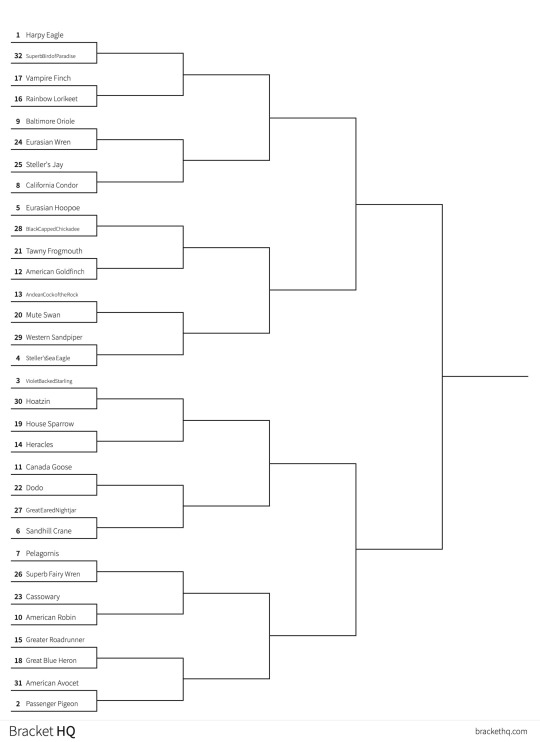

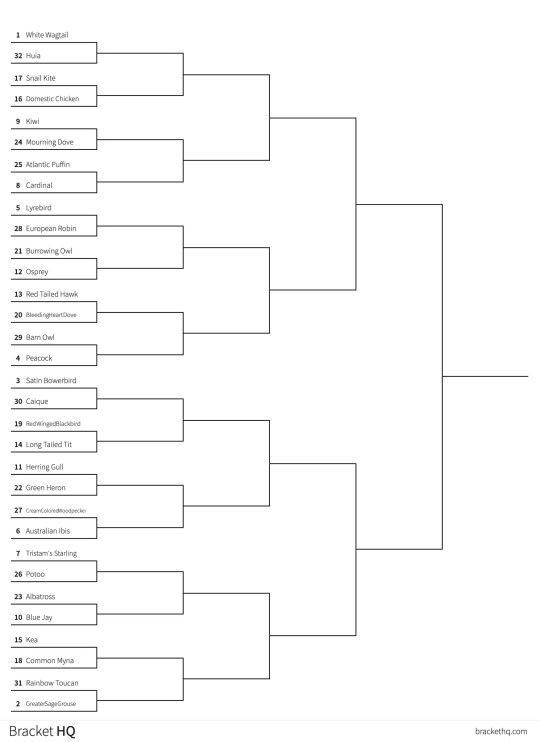

I know there’s a lot of them, but man there’s SO MANY GOOD BIRDS! There were a few times where people didn’t put what specific subspecies for some birds, so sometimes I’d have to choose one. I tried to choose one that represents that bird the best!
I don’t know when the polls will begin, I’m doing some research on the birds so that people can read about them before they vote.
If one of your favs didn’t make it in, don’t worry they’re a winner in my and your heart.
If you are wondering where the Pigeon (Rock Dove) is, THEY ARE THE FINAL CHAMPION! At the end of this bracket, the winner will face off against the mightily popular Rock Dove! Will they be able to beat such a tough challenger? We will see…
Also, a note on how I set this bracket up: I put all the birds in a numbered list and then used a number generator. I think the matchups we got were really interesting.
Full list under the cut
HARPY EAGLE
SUPERB BIRD OF PARADISE
VAMPIRE FINCH
RAINBOW LORIKEET
BALTIMORE ORIOLE
EURASIAN WREN
STELLER'S JAY
CALIFORNIA CONDOR
EURASIAN HOOPOE
BLACK CAPPED CHICKADEE
TAWNY FROGMOUTH
AMERICAN GOLDFINCH
ANDEAN COCK OF THE ROCK
MUTE SWAN
WESTERN SANDPIPER
STELLER'S SEA EAGLE
VIOLET BACKED STARLING
HOATZIN
HOUSE SPARROW
HERACLES
CANADIAN GOOSE
DODO
GREAT EARED NIGHTJAR
SANDHILL CRANE
PELAGORNIS
SUPERB FAIRY WREN
SOUTHERN CASSOWARY
AMERICAN ROBIN
GREATER ROADRUNNER
GREAT BLUE HERON
AMERICAN AVOCET
PASSENGER PIGEON
WALLCREEPER
GREAT TIT
MOA
EASTERN BLUEBIRD
AUSTRALIAN BUSHTURKEY
EMU
MALLARD DUCK
FLAME BOWERBIRD
MANDARIN DUCK
BELTED KINGFISHER
OILBIRD
FAIRY PENGUIN
LESSER FLAMINGO
AUSTRALIAN KESTREL
CARRION CROW
UMBRELLABIRD
LOGGERHEAD SHRIKE
PERUVIAN PELICAN
CALIFORNIA QUAIL
MACGREGORS BOWERBIRD
HARRIS HAWK
COMMON RAVEN
BEARDED VULTURE
PEREGRINE FALCON
ROSY LOVEBIRD
ROSEATTE SPOONBILL
LONG TAILED GRACKLE
AMERICAN WOODCOCK
KAKAPO
BLUE FOOTED BOOBY
RHEA
BEE HUMMINGBIRD
WHITE WAGTAIL
HUIA
SNAIL KITE
DOMESTIC CHICKEN
KIWI
MOURNING DOVE
ATLANTIC PUFFIN
CARDINAL
LYREBIRD
EUROPEAN ROBIN
BURROWING OWL
OSPREY
RED TAILED HAWK
BLEEDING HEART DOVE
BARN OWL
PEACOCK
SATIN BOWERBIRD
CAIQUE
RED WINGED BLACKBIRD
LONG TAILED TIT
HERRING GULL
GREEN HERON
CREAM COLORED WOODPECKER
AUSTRALIAN IBIS
TRISTAM'S STARLING
POTOO
WANDERING ALBATROSS
BLUE JAY
KEA
COMMON MYNA
RAINBOW TOUCAN
GREATER SAGE GROUSE
TURKEY VULTURE
TUFTED TITMOUSE
CRESTED AUKLET
EURASIAN MAGPIE
BUDGIE
SCREECH OWL
WIP-POOR-WILL
SECRETARY BIRD
AUSTRALIAN MAGPIE
CEDAR WAXWING
VICTORIA CROWNED PIGEON
HERMIT THRUSH
COMMON SWIFT
WHITE BELLBIRD
BROWN SKUA
EUROPEAN DIPPER
112 notes
·
View notes
Text
26.08.2022
Starting a little birdwatching journal :) I got a pocket bird ID handbook in town today and went to look at some shore birds!
I identified some great black backed gulls floating and feeding on the sea, a lesser black backed gull taking a nap on top of a lamp post, a couple of house martins flittering back and forth between rocks, a scraggly looking rook grooming on a lamp post and a large brown bird with a longish neck that I couldn't make the features of very well, but maybe a great or arctic skua?
Stood there for about 15 minutes trying to identify what I thought was a bird, and what I thought was a male hen harrier, but it was, in fact, a chimney pipe
As I was typing the above I saw a gull-like bird that was mostly black with a white head but I couldn't figure out what it was :( However I did also see two black headed gulls out of breeding season ambling on a pond near the coast and more scraggly looking rooks on a low beach hut roof!
I also spent like 15 minutes standing by a bush on the side of the sidewalk trying to ID a tiny bird with a really distinct "tweep" call, an unpatterned brown back and black wing tips. Gonna try to look it up later, my book didn't have anything that matched.
And now I have wandered to the other side of town and I am So hungry so I am going to conclude my birdwatching here and go to lidl to get a pizzini and then try to find a bus home
Note to self: bring binoculars next time
9 notes
·
View notes
Text
Bird flu has reached Antarctica- Australian Geographic
New Post has been published on https://petn.ws/9kD0K
Bird flu has reached Antarctica- Australian Geographic
Home News ‘We’re going to see some haunting images’: Bird flu has reached Antarctica By Candice Marshall • February 28, 2024 The disease has been confirmed in two brown skuas (Stercorarius antarcticus). Image credit: shutterstock It’s the news conservationists have been expecting, but dreading. The avian influenza H5N1 virus has reached mainland Antarctica. The highly […]
See full article at https://petn.ws/9kD0K
#BirdNews
0 notes